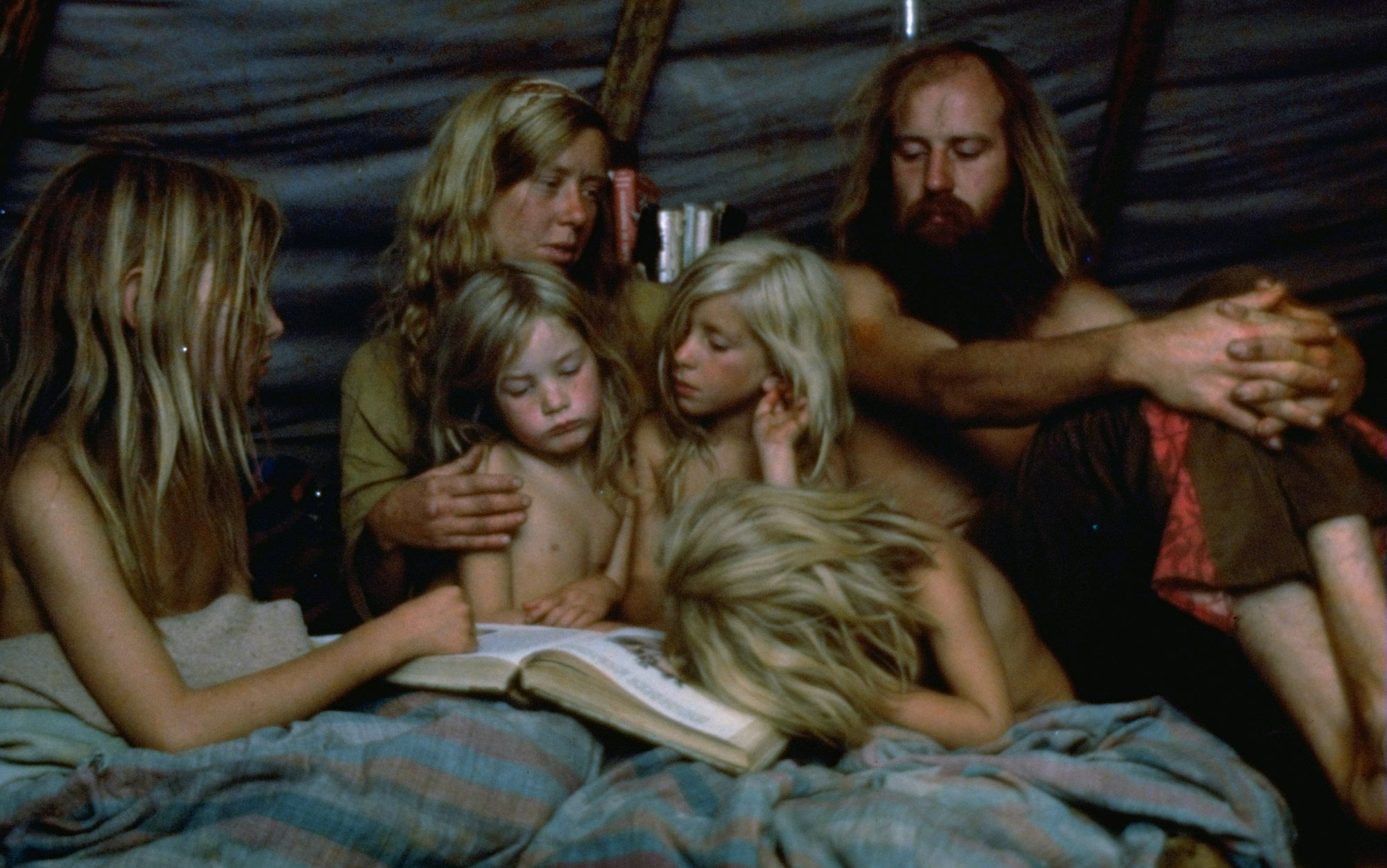by ALEXA CLAY
 The Bray family reading bedtime stories at the Family of the Mystic Arts Commune PHOTO/John Olson/LIFE Picture Collection/Getty
The Bray family reading bedtime stories at the Family of the Mystic Arts Commune PHOTO/John Olson/LIFE Picture Collection/Getty
Most utopian communities are, like most start-ups, short-lived. What makes the difference between failure and success?
At 16, Martin Winiecki dropped out of school and left his home in the German city of Dresden to live full-time at Tamera, a 300-acre intentional community in the rolling hills of southwestern Portugal. His mother and father – a doctor and a professor of mathematics – were reluctant to let him go. ‘It was quite a shock for them,’ Winiecki remembers. Born in 1990, just a few months after the collapse of the Berlin wall, Winiecki came of age in a society in limbo. The atmosphere of the former GDR still clung to people. ‘It was a culture that was so formal. So obligation-oriented. That had no heart. No love,’ Winiecki explained. At the same time, in Winiecki’s eyes, the capitalist alternative was creating a ‘system of deep economic injustice – of winners and losers’. Neither story encompassed a humanity he wanted part of. Tamera offered an alternative.
Founded by the psychoanalyst and sociologist Dieter Duhm in Germany in 1978 and re-founded in Portugal in 1995, Tamera aspired to dissolve the trauma of human relationships. Duhm, heavily influenced by Marxism and psychoanalysis, came to see material emancipation and interpersonal transformation as part of the same project. Duhm had been deeply disillusioned by communes where he’d spent time in the 1960s and ’70s, and which seemed to reproduce many of the same tyrannies that people were trying to escape: egoism, power struggles, envy, mistrust and fear, while practices of sexual freedom often engendered jealousy and pain. In Duhm’s eyes, communes had failed to create a viable model for a new society. In Tamera, he hoped to begin a social experiment that allowed for deep interpersonal healing.
Communitarian experiments such as Tamera are nothing new, although its longevity – almost 40 years – is unusual. Generally, intentional communities fail at a rate slightly higher than that of most start-ups. Only a handful of communities founded in the US during the 19th century’s ‘golden age of communities’ lasted beyond a century; most folded in a matter of months. This golden age birthed more than 100 experimental communities, with more than 100,000 members who, according to the historian Mark Holloway in Heavens on Earth (1951), sought to differentiate themselves from society by creating ‘ideal commonwealths’. The largest surge in communitarian ‘start-ups’ occurred during the 1840s and 1890s, coinciding with periods of economic depression. But it would be a mistake to see intentional communities merely as a knee-jerk response to hard times.
In historic terms, a broader discontent with industrial society has led to people flocking to communes, utopias and spiritual settlements, from eco-villages and ‘back to the land’ style settlements designed to create sustainable lifestyles and a stronger relationship to nature, to communities founded with spiritual or idealist visions for transforming human character and creating new blueprints of society. Of course, the ‘cult’ label is never far behind. Many intentional communities have had to fight their own public-relations battles in the wake of negative or sensational publicity.
But regardless of our suspicions, our appetite for communitarian living might even be evolutionarily hard-wired. Some sociologists have gone as far as to suggest that we are mal-adapted in modern society, and that ‘tribal’ forms of life are more viable. Theories of neo-tribalism suggest that instead of mass society, human nature is best suited to small, caring groups. The anthropologist Robin Dunbar at the University of Oxford claims that humans can comfortably maintain no more than 150 stable relationships, which suggests that communitarian living might not be so much of an ‘outlier’ or ‘experiment’. From an evolutionary perspective, modern society itself might be the anomaly. As the cultural critic Daniel Quinn writes in The Story of B (1996), for 3 million years the tribal life worked for us: ‘It worked for people the way nests worked for birds, the way webs work for spiders, the way burrows work for moles … That doesn’t make it lovable, it makes it viable.’
Aeon for more
